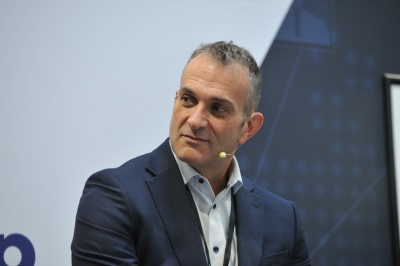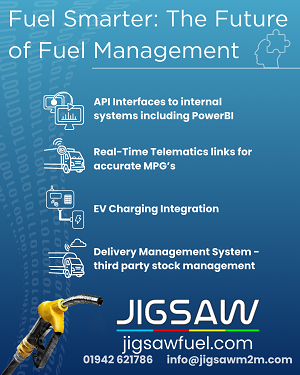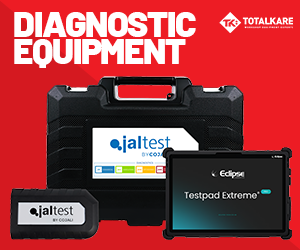Tackling the real cost of driver fatigue
 Sergio Barata, vice president EMEA at Netradyne, discusses the risks of tiredness while driving and a proactive approach to combating it
Sergio Barata, vice president EMEA at Netradyne, discusses the risks of tiredness while driving and a proactive approach to combating it
Despite years of investment in telematics, ADAS, and tachograph oversight, fatigue-related incidents remain one of the fleet industry’s most persistent and under-recognised risks. Studies suggest that tiredness contributes to between 10–20 per cent of all road accidents, with sleep deprivation proven to slow reaction times even more than alcohol.
The real cost extends beyond collisions and compliance breaches, encompassing lost productivity, higher costs, more frequent driver turnover, and the erosion of trust.
Indeed, fatigue isn’t just a safety problem; it’s also a performance and retention issue. A tired driver is not just a safety risk; they’re less productive, less engaged, and more likely to leave. Fatigue and distraction are not simply driver failings; they are operational warning lights and business risks.
They reveal system pressure points: long hours, tight schedules, limited rest opportunities, and rising delivery demands. When these factors combine, even experienced drivers face declining alertness and slower reaction times.
Recent Netradyne research conducted with Health, Safety, and Environment (HSE) professionals underscores the scale of the challenge: fleet and driver safety ranks among the top two organisational priorities for progressive fleets.
These same professionals cited that investments in fleet safety technology are increasingly driven by the need to reduce road accidents and optimise operational costs, with driver fatigue and distraction topping the list of risks to address, followed closely by unsafe driving behaviour.
Treating fatigue and driver wellness as a strategic business metric and commercial imperative, rather than an individual weakness – on par with fuel efficiency or on-time delivery – reframes it as something measurable and improvable.
From reactive monitoring to intelligent prevention
Fleet safety systems have advanced significantly, but they are largely reactive in nature, flagging risky driving behaviour after the fact or putting guardrails in place to ensure compliance with driving hour regulations.
A prescriptive approach to managing fatigue has limitations; it cannot predict when fatigue or distraction actually begins to set in – the point at which effective prevention can be initiated. It’s therefore important for fleets to transform fatigue management from mere compliance checkbox to competitive advantage.
The Netradyne HSE research findings reinforce this shift in mindset: organisations are now prioritising technology that actively prevents incidents, not just reports them. Just as predictive maintenance prevents mechanical breakdowns, predictive safety helps prevent human ones.
 By utilising AI insights to identify early signs of fatigue or distraction, fleets can intervene before the risk escalates. Indeed, as AI and analytics continue to evolve, fatigue management is set to become one of the defining areas of fleet innovation. The ability to interpret not just data but human behaviour in context will separate fleets that simply comply from those that truly perform.
By utilising AI insights to identify early signs of fatigue or distraction, fleets can intervene before the risk escalates. Indeed, as AI and analytics continue to evolve, fatigue management is set to become one of the defining areas of fleet innovation. The ability to interpret not just data but human behaviour in context will separate fleets that simply comply from those that truly perform.
AI-powered telematics is redefining what fleet visibility means. By combining camera vision, driver monitoring, and predictive analytics, these systems can spot early signs of fatigue or distraction – such as drifting lanes, inconsistent steering, or prolonged blinks – before they escalate into incidents.
Unlike single-feature fatigue systems, Netradyne’s combined Driver•i and DMS solution unifies real-time camera vision, driver monitoring, and predictive analytics into one intelligent safety platform. The result is continuous, 100 per cent monitoring of every moment behind the wheel – not just selected events – allowing risks to be identified the instant they emerge.
With real-time in-cab alerts, and recognise positive driving and precise AI models trained on more than 25 billion miles of driving data, Driver•i delivers unmatched accuracy and responsiveness. This end-to-end, AI-powered, regulation-ready ecosystem moves fleets beyond basic compliance, empowering fleet managers to proactively address fatigue, prevent incidents and reward safe driving on every shift.
Built on validated research measures like Percentage of Eyelid Closure over the Pupil over Time (PERCLOS), they enable fleets to act proactively, not reactively, turning safety data into a true performance tool.
By recognising these early warning signs, fleets can intervene well before a driver loses focus, helping prevent fatigue-related incidents across long-haul, logistics and passenger transport operations. This holistic approach supports while helping fleets cut accidents, lower costs, and build safer driving cultures.
The human side of safety data
But even the most advanced data is only as effective as the culture it informs. True fatigue prevention depends on how insights are utilised – to coach, support, and empower drivers, rather than just to monitor them.
Technology offers visibility, but people create change. AI-driven insights are most valuable when they lead to meaningful conversations and informed decisions, not just data reports or penalties.
 By analysing behavioural patterns, like routes that regularly cause lapses in attention or shifts that coincide with declining alertness, fleet managers can identify where fatigue risks are emerging. This opens the door to practical solutions such as adjusting schedules, workloads, or rest periods.
By analysing behavioural patterns, like routes that regularly cause lapses in attention or shifts that coincide with declining alertness, fleet managers can identify where fatigue risks are emerging. This opens the door to practical solutions such as adjusting schedules, workloads, or rest periods.
An effective approach pairs these insights with coaching and open communication. Recognising both positive behaviour and risk encourages drivers to take ownership of their alertness and performance. When managers focus on development rather than discipline, drivers feel supported instead of surveilled.
The result is a proactive safety culture that treats alertness and well-being as core operational priorities. Integrating fatigue awareness into briefings, training, and planning, and empowering drivers to speak up when they’re not fit to drive, helps prevent fatigue before it becomes systemic.
Wellbeing as a performance multiplier
The business case for driver well-being is clear. Fleets that prioritise rest, recognition, and realistic workloads tend to see measurable improvements in safety, retention, and cost efficiency.
Fleets adopting positive coaching and real-time feedback are already seeing meaningful reductions in risky behaviour and greater driver engagement. Beyond the results, these changes reflect a deeper shift: from control to collaboration.
When drivers feel trusted and valued, they take greater ownership of their performance. They’re more likely to report early signs of fatigue, follow safety procedures, and engage with training. In short, they become partners in risk reduction.
The next stage of fleet safety
Safety and productivity are not opposing goals; they are interdependent. Fatigue management, driver engagement, and operational efficiency are all integral components of a unified system.
For fleets under pressure to deliver more with less, the path forward lies in recognising that wellness equals performance. By addressing the causes of fatigue rather than just the symptoms as part of a broader culture of engagement and wellness, fleet leaders can protect their people, their reputation, and their bottom line, one alert, supported driver at a time.
When technology, coaching, and care for the human behind the wheel align, fleets move beyond compliance to performance, building safer, stronger, and more sustainable operations from the inside out.













